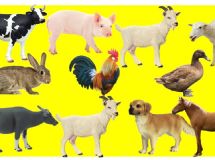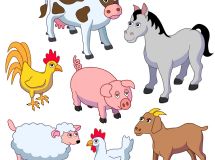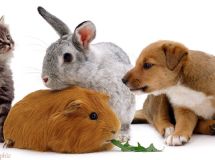- Foxes rely on voles for food.red fox,fox,mammal,animal,big bear,big bear lake,c image by Earl Robbins from Fotolia.com
Voles look like fuzzy mice with short tails. They differ from mice thanks to flat grinding surfaces on their molars that appear in a triangular pattern. The tiny creatures provide valuable food sources for birds and wildlife, although they can also cause lots of damage to garden and landscape plants. - A variety of species of voles live in North America, including the red-backed voles with their red-colored backs. Red-backed voles live in forests. Another vole includes the genus Microtus, consisting of brown or gray voles found primarily in grassy habitats. Other species of voles include the meadow vole, tundra vole, long-tailed vole, yellow-cheeked vole and the singing vole. Singing voles get their name from the high-pitched, pulsating squeak they make when an intruder enters their colony.
- Voles live in just about any place where they can find plant material to eat. Most voles live in colonies where they build tunnels crisscrossing their territory. During the winter, voles make burrows beneath the snow to access grass and seedheads buried under the snow. In the spring, vole burrows become quite evident as the snow melts.
- Voles breed anytime during the year, preferring warmer weather from spring through fall. The females gestates less than one month. Depending on the species, voles bear from 3 to 7 babies in each litter. Some voles, such as the creeping vole, produce 4 to 8 litters per year. Females are capable of breeding once they reach 24 days old.
- Most voles eat plants and grasses growing both above and below ground. The little creatures eat all parts of the plant including the foliage, seeds, stems, roots and bulbs. The red-backed vole eats plant foods as well as lichens, fungi, insects and meat. Unfortunately, voles living in gardens and yards eat the roots of new trees as well as bulbs and plants with succulent roots. Voles also eat the cambium of tree roots, crowns and trunks, especially when food becomes more scarce in fall and early winter.
- The damage done by voles get noticed when the plants, tubers or bulbs disappear. Watch for trees that look stunted or spindly with little foliage. The leaves of these trees also start to look like those of water-stressed plants. Leaves may show sings of reddening outside of autumn. Damaged trees appear whittled near the trunk with chew marks recognized by pattern, location and size of the bite marks. Since voles feed close to the ground, irregular and non-uniform gnaw marks may indicate voles at work. Voles also tunnel around the roots of trees, creating noticeable air pockets.
- A variety of wildlife relies on voles as an important food source. Birds such as owls, eagles, hawks and great blue herons prey on the voles by gliding over the area or stalking them from the ground. Other wildlife, including coyotes, foxes, weasels, martens, snakes and shrews, also hunt and eat voles.
Species
Habitat
Reproduction
Food
Damage
Wildlife
SHARE







































